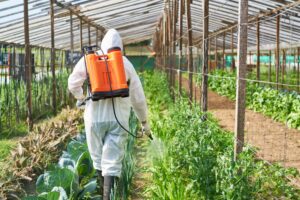Agriculture at COP29: A Vital Conversation for Climate and Food Security
-
From
CGIAR Climate Impact Platform
-
Published on
20.11.24
- Impact Area

Today, COP29 in Baku turned its attention to the food and agriculture sector—an area often sidelined in climate discussions despite its central role in global livelihoods and its vulnerability to climate change. With over 2.5 billion people dependent on agriculture, many of them smallholder farmers in low- and middle-income countries (LMICs), the sector is both a significant contributor to greenhouse gas emissions and one of the hardest hit by climate impacts like droughts, floods, and heatwaves.
This year’s talks offer a critical opportunity to integrate agriculture into the global climate conversation, particularly through the lens of a just transition—ensuring no sector, country, or community is left behind as economies shift to low-carbon pathways.
The case for elevating agriculture in climate discussions is clear. Between 1991 and 2021, disasters linked to climate change caused an estimated $3.8 trillion in crop and livestock losses, with LMICs bearing the highest relative costs. Losses in agriculture ripple through food systems, economies, and communities, leaving vulnerable populations trapped in cycles of crisis and recovery. But agriculture is also part of the solution. If scaled up, sustainable practices can reduce emissions, enhance food security, and create resilience against future climate shocks. This dual role makes agriculture indispensable to achieving the goals of the Paris Agreement
Bridging the Agricultural Finance Gap
In a recent Op-ed by CGIAR’s Executive Managing Director, Ismahane Elouafi, and Kaveh Zahedi, Director of the Office of Climate Change, Biodiversity, and Environment at the Food and Agriculture Organization (FAO), the authors emphasize a critical yet often overlooked aspect of the climate conversation: the agrifood sector’s role in achieving a “just transition.” While the energy sector frequently dominates these debates, sustainable agriculture practices must also be prioritized—without imposing undue strain on farmers or low-income nations. A fair transition for agriculture deserves equal attention and recognition at the ongoing COP29 United Nations Climate Conference as the discussions on energy transitions.
With COP29’s spotlight on climate finance, there is a timely opportunity to address the glaring gaps in agricultural funding. The now operational Loss and Damage Fund could be transformative if resources are directed toward regions most impacted by climate change. Adequately allocated, these funds could help farmers access improved seeds, adopt climate-resilient technologies, and receive training, enabling them to rebuild sustainable livelihoods and strengthen food systems.
However, the question persists: Will countries demonstrate the political will to prioritize agriculture and bridge the sector’s significant financial shortfall? COP29 has shown no signs of this happening.

A Just Transition for Agriculture: Beyond Buzzwords
A just transition cannot be successful if it doesn’t address farmers’ unique vulnerabilities while facilitating a shift to sustainable and resilient agrifood systems. A recent COP29 issue brief on Just Transitions, published by the CGIAR Climate Impact Platform, underscores the importance of a holistic approach to integrating agriculture into just transition strategies effectively. Three key pillars guide this approach:
- Greater Research and Development
The agriculture sector needs targeted research to develop climate-smart solutions, such as drought-resistant crops and sustainable farming techniques. Yet, only 1.7% of global climate finance reaches smallholder farmers. This imbalance must change. - Transition Support
Transitions can’t succeed without robust support systems. Farmers need access to social safety nets, training programs, and financial resources to navigate changes in crop patterns and farming practices. In South Asia, cash transfer programs are helping farmers move away from water-intensive crops like rice to more climate-resilient options.
- Policy coherence and government support
Governments must integrate agriculture into climate frameworks, ensuring farmers’ needs and voices are reflected in National Adaptation Plans (NAPs) and Nationally Determined Contributions (NDCs). Land rights, inclusive decision-making, and policy coherence across sectors are crucial for enabling lasting change.
The conversations at COP29 must continue highlighting the urgency of positioning agriculture in the global climate agenda. Agriculture must move from a peripheral issue to a central pillar of climate resilience and economic stability. As COP29 progresses, the hope remains clear: agriculture must no longer be sidelined. Instead, it should be embraced as a vital part of the solutions required to confront the climate crisis effectively.
COP29 Reflections by, Gina Edward-Uwadiale, CGIAR Climate Impact Platform.
Related news
-

CGIAR Climate Security team pilots a new research approach for the development of Nature-based Solutions in fragile settings
Ibukun Taiwo27.11.25-
Climate adaptation & mitigation
Responding to complex crises requires new systemic research approaches that help identify entry poin…
Read more -
-

Drones prove their worth in measuring livestock methane in Africa
International Livestock Research Institute (ILRI)26.11.25-
Mitigation
In May 2024, the International Livestock Research Institute (ILRI) and partners shared news of the…
Read more -
-

Pioneer adaptation farmers inspire adoption of climate-smart innovations in Bomet County, Kenya
International Livestock Research Institute (ILRI)24.11.25-
Adaptation
In Bomet County, Kenya, where agricultural traditions run deep, two families and their farms are…
Read more -
